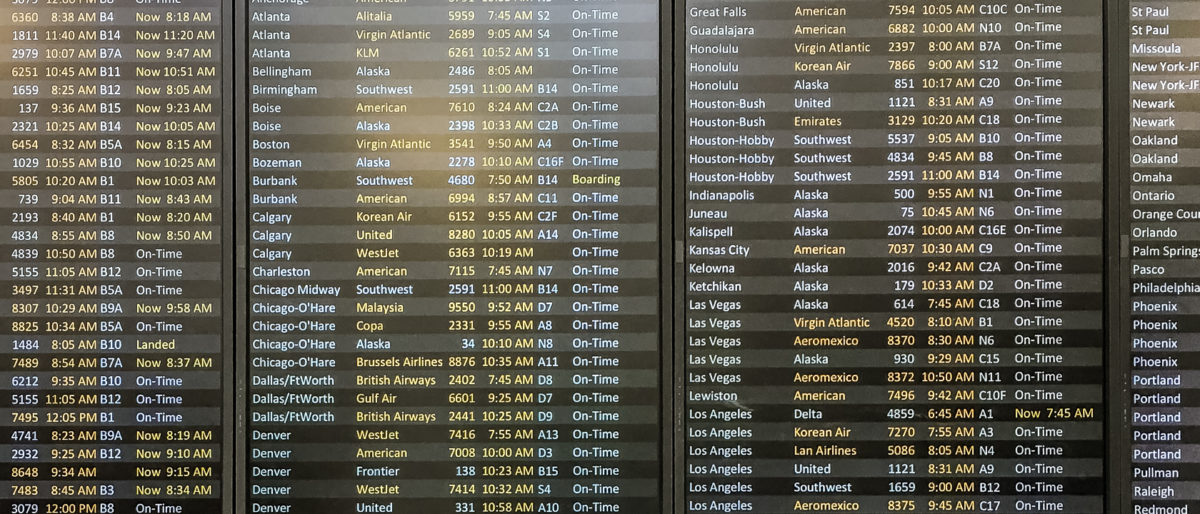US Customs and Border Protection’s Biometric Exit is a project that uses facial matching systems to identify visa holders as they leave our country. Taking advantage of the latest technology, passengers traveling into the United States on a visa would be matched with the passport-style photos that accompany visa applications. The idea: if there is no match in the system, the visitor might have entered our country illegally. Interesting, but why try to catch them on the way out of the country?
We’ll get to the ‘why?’ of this shortly. First, a nod to several governmental agencies working together to ensure safe travels for all of us

Catch Them On The Way In
Fingerprints are one biometrics that can be used for automated recognition. At the Department of Homeland Security, biometrics are used to detect and prevent illegal entry into the U.S., grant and administer proper immigration benefits, vetting and credentialing, facilitating legitimate travel and trade, enforcing federal laws, and enabling verification for visa applications to the U.S.
DHS provides biometric identification services to protect the nation through its Office of Biometric Identity Management (OBIM), which supplies the technology for matching, storing, and sharing biometric data. OBIM is the lead designated provider of biometric identity services for DHS, and maintains the largest biometric repository in the U.S. government.
Automated Biometric Identification System
The DHS biometric effort is called the Automated Biometric Identification System or IDENT, is operated and maintained by OBIM. IDENT currently holds more than 200 million unique identities and processes more than 300,000 biometric transactions per day.
Working Together For Safe Travels
Through biometric interoperability with the Department of Defense (DoD) and the Department of Justice (DoJ), DHS shares critical biometric information using advanced data filtering and privacy controls to support the homeland security, defense, and justice missions.
So, back to the question: Why look for people who have visited our country illegally on their way out of the country? Actually, that’s just one way a number of government agencies and local law enforcement departments are identifying those potential problem visitors.

Facial recognition is just one part of the overall biometric effort. Other biometric tools now in use include:
- Advanced Fingerprint Identification Technology (AFIT)- AFIT replaced the legacy Automated Fingerprint Identification System (AFIS). The AFIT enhanced fingerprint and latent processing services, increased the accuracy and daily fingerprint processing capacity, and improved system availability.
- Repository for Individuals of Special Concern (RISC)– this rapid search service accessible to law enforcement officers nationwide, became available through the use of a mobile fingerprint device. The NGI rapid search has a response time of fewer than 10 seconds and includes Immigration Violator File (IVF) of the National Crime Information Center (NCIC), convicted sex offenders, and known or appropriately suspected terrorists. The NGI RISC rapid search service is available only to authorized criminal justice personnel for criminal justice purposes in compliance with federal and state laws.
- The National Palm Print System (NPPS)– This system contains palm prints that are searchable to law enforcement nationwide, providing powerful new crime-solving capabilities to local, state, tribal, and federal law enforcement agencies across the country.
- Rap Back- The Rap Back service allows authorized agencies to receive notification of activity on individuals who hold positions of trust (e.g. school teachers, daycare workers) or who are under criminal justice supervision or investigation, thus eliminating the need for repeated background checks on a person from the same applicant agency.
- The Interstate Photo System (IPS) uses facial recognition to search millions of criminals’ photos—data the FBI has collected for decades—and generates a list of ranked candidates as potential investigative leads for authorized agencies.
- Cold Case/Unknown Deceased- To further increase the tools available to the LE community, the CJIS Division has made a commitment to establish enhanced services to assist in meeting the challenges that face the criminal justice community in the identification of cold case/unknown deceased investigations. Using the advanced search algorithms within NGI, and the ability to cascade NGI searches against the criminal and civil files, as well as event based searches, this tool will strengthen criminal investigations and increase the use of enhanced state-of-the-art biometric technologies.
- Iris Pilot- The FBI deployed an Iris Pilot (IP) in September 2013 to evaluate technology, address key challenges, and develop a system capable of performing iris image recognition services. The IP is building a criminal iris repository and will eventually deploy initial matching functionality. The IP continues to provide CJIS the opportunity to assess and/or develop privacy and policy documentation, best practices for iris image capture, iris camera specification requirements, specifications for iris image compression, and a review of new and existing iris image quality metrics. Furthermore, the IP provides the CJIS Division with the opportunity to create a national iris repository that will increase the usability of iris biometrics.
It’s an ever evolving topic for everyone involved in the process of safe travels. Coming up, we look at other systems in place to protect travelers as well as options we can take advantage of to make the process of getting there more palatable.

Comments are closed.